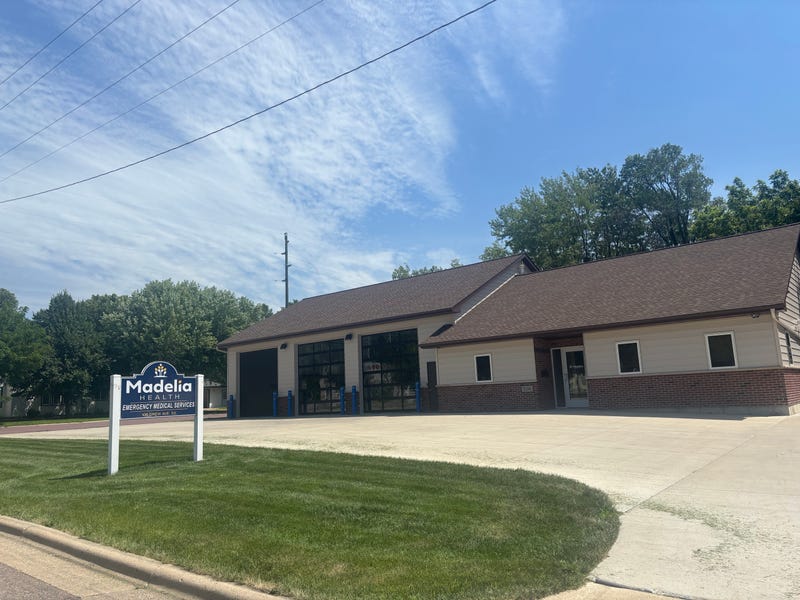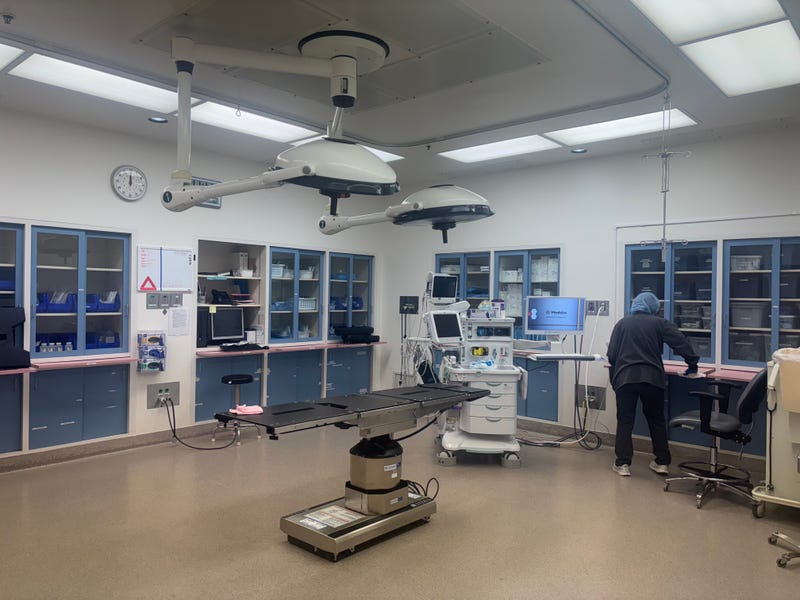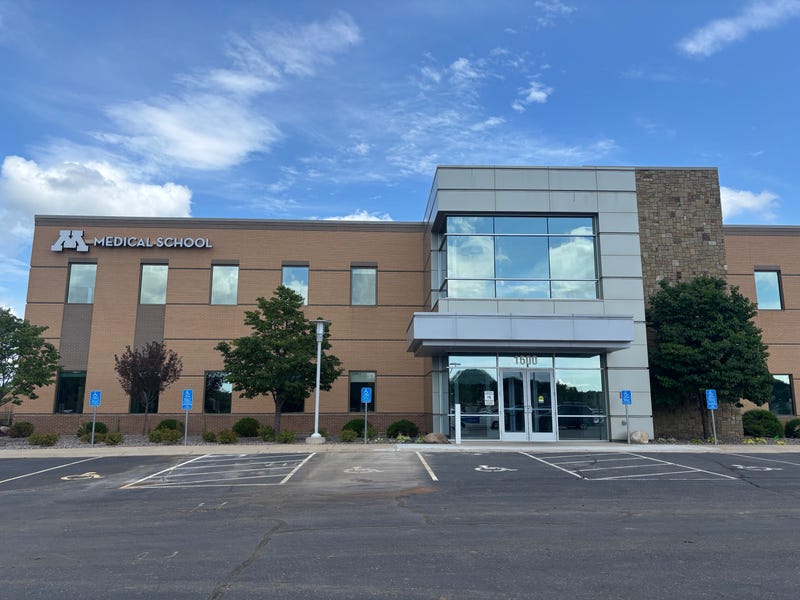
A new analysis from the Minnesota Department of Human Services shows as many as 140,000 residents will lose their health coverage due to federal Medicaid cuts. In this month's "A Closer Look," WCCO's Laura Oakes examines not only how the state's rural hospitals already facing a physician shortage will be particularly hard hit, but also why some rural medical leaders are optimistic.
It’s a hot July Tuesday and the President and CEO of Madelia Health is getting a weekly read on things from the coffee ladies at Sweet Indeed.
"There's probably 10 to 14 of them on any given day or any given Tuesday that come up there. They probably go up more days, but that's the day I go up there, and then I can float ideas to them on how we're doing, what services that we're not providing that we should be providing. And if I want or need to get information out in the community, that's a great way because then they spread that word," says David Walz, who is no relation to the Governor of Minnesota.
Walz is also preparing for an employee cookout the next day to celebrate the opening of the independent health system’s new clinic in New Ulm, the hiring of a new nurse practitioner, and being named one of the state’s top workplaces by the Minnesota Star Tribune for the second year in a row.
But for all of the good news, this major small town employer whose slogan is “let our family take care of yours” also has had to make deep cuts in services, and writes off millions of dollars a year when patients can't pay their bills.
With an estimated 140,000 Minnesotans set to lose their health care coverage due to Medicaid spending cuts, Walz says they'll feel it at their core.
"Our employment affects home loans, car loans, grocery stores, restaurants, all those insurance, banking partners uptown," says Walz. "You know, we play a vital role in the community I believe. And as well as people working here, they have children, they go to school, and the trickle down effect of, if we're not here, definitely could have a major impact to this community."
Madelia Health is part of the 19-member Headwaters Network, a group of Minnesota independent health systems figuring out how to work together and share services in hopes they’ll stay afloat.
While only 7-9% of Madelia Health’s patients are on Medical Assistance, Minnesota's version of Medicaid, Walz says they don’t yet know the unintended consequences of the coming cuts.
That worries Madelia’s Community and Business Development Specialist Celia Simpson, tasked with supporting the town and drawing more people to it.
Simpson calls the hospital an essential community asset.
"Hospitals are hard to come by," says Simpson. Healthcare is hard to come by in our rural areas, and Madelia Health does provide 24/7 emergency services to the city of Madelia, as well as clinics in Truman and St. James. Specialty service access is really critical for our residents, especially some of the seniors. In the city of Madelia, 10% of our population are seniors, are 65 and older, and living in poverty. And so transportation difficulties, as well as just the cost it takes to drive or get healthcare in other communities can just be a really big burden for them. So these cuts could have longer reaching impacts than we think."

Rural hospitals are already struggling to stay afloat
New research from the University of Minnesota School of Public Health shows rural hospitals are already in a precarious position.
The analysis showed that when a rural hospital closes - thereby eliminating a low-price, affordable hospital from the region - prices at nearby hospitals increased by 3.6%. Throw in Medicaid cuts, and Minnesota's State Medicaid Director John Connolly says, unfortunately, rural hospitals are in the bullseye.
"Often, in many communities in greater Minnesota or rural parts of Minnesota, there is a higher share of people in the community who rely on Medicaid for their health coverage," Connolly explains. "And therefore, the hospitals in those communities rely more disproportionately on Medicaid relative to some facilities in the metro areas."
Connolly says the new, paperwork-heavy eligibility requirements will further complicate matters. Under the new plan, most people on Medical Assistance must reapply for coverage every six months and work at least 80 hours a month, likely turning some people away from even trying to qualify.
Furthermore, Connolly says the loss in coverage within Medicaid will raise health care costs for everyone, as uncompensated providers without an important source of payment feel the stress and need to cover their costs.
Politically-speaking, and despite the potential threats to their own health benefits, 76% of Republican and Republican-leaning voters - most of whom live in rural Minnesota - supported the cuts to Medicaid according to a recent Star Tribune/Hubbard School of Journalism and Mass Communication Minnesota Poll.

Minnesota invests in training rural physicians
But despite some of the grim predictions over the future of rural health care, a gleaming, new University of Minnesota Medical School campus in St. Cloud is training its first class of 24 new rural doctors.
"I'll show you this. So this can be set up like a hospital bay, a trauma bay, a surgical bay," explains Dr. Jill Amsberry.
Amsberry is the Medical School's Assistant Dean, with the mission of addressing a serious shortage of rural physicians in Minnesota.
"My own family up in Park Rapids, they see that on a regular basis where someone will come in and what used to be a local general practitioner, family medicine doctor, who took care of the family for decades is no longer the case," Amsberry tells WCCO's Laura Oakes. "You know, they're really trying hard to recruit people into those settings and are challenged to do so. And we're not seeing that that's going to get better anytime soon. We know that a third of physicians plan to retire in the next five years, and the shortage exists already. And so when we're thinking about how that impacts our rural health systems, they're already challenged in recruiting physicians there. And as you add cuts to those rural settings, now they're even more challenged. Challenged to maintain staff, challenged to maintain facilities, and we all know that health systems are an incredible fulcrum to holding communities together and keeping communities healthy."
One member of the inaugural class is Emma Lundgren from nearby Sartell, a vibrant, articulate graduate of St. Ben's who has always known she wanted to take care of people.
Lundgren prepared for med school by working as an EMT and a scribe in a local emergency room. She says the driving force in wanting to be a doctor was when a lack of rural health care began to impact her own family.
" My uncle was diagnosed with laryngeal cancer, and having lived out in western Minnesota, he had to drive down to the Mayo Clinic twice a week to receive treatments while trying to keep his auto body shop afloat," says Lundgren. "Trying to help my older aunt understand the importance of taking her blood pressure and her blood thinner medication, because of a lack of health literacy or, you know, watching my uncle turn to drugs and alcohol because of not only a lack of accessible mental health services, but also kind of a stigma in that area. So there's just a lot of need."
Lundgren also speaks fluent Spanish and is hoping to put it to use helping the large number of migrant workers in the area. Plus, she says she's always seen herself as a rural physician.
"You definitely see a broader scope of things. Like, if you're working in a hospital out in Staples, Minnesota," says Lundgren. "You're probably working in an ER role, working in the emergency room at the same time that you're also doing some family medicine stuff, at the same time that you're probably delivering babies, at the same time that you're doing some internal medicine stuff. So I really like the idea of having a broad scope of things and getting to have a little bit more autonomy. A little bit more responsibility."
Yet, for all of the shiny, new training facilities, enthusiastic students, and the committed, hard working institutional leaders keeping the state's rural hospitals afloat right now, the University of Minnesota's Dr. Amsberry says two things can be true: she says yes, there can be some real challenges in how we deliver health care in a rural setting such as the looming cuts to Medicaid. And she says, we can have great hope.
"What we can't do is nothing," Amsberry concludes. "We cannot sit back and just watch our rural health systems close."
SEE MORE: All of Laura Oakes' "A Closer Look" stories here.
